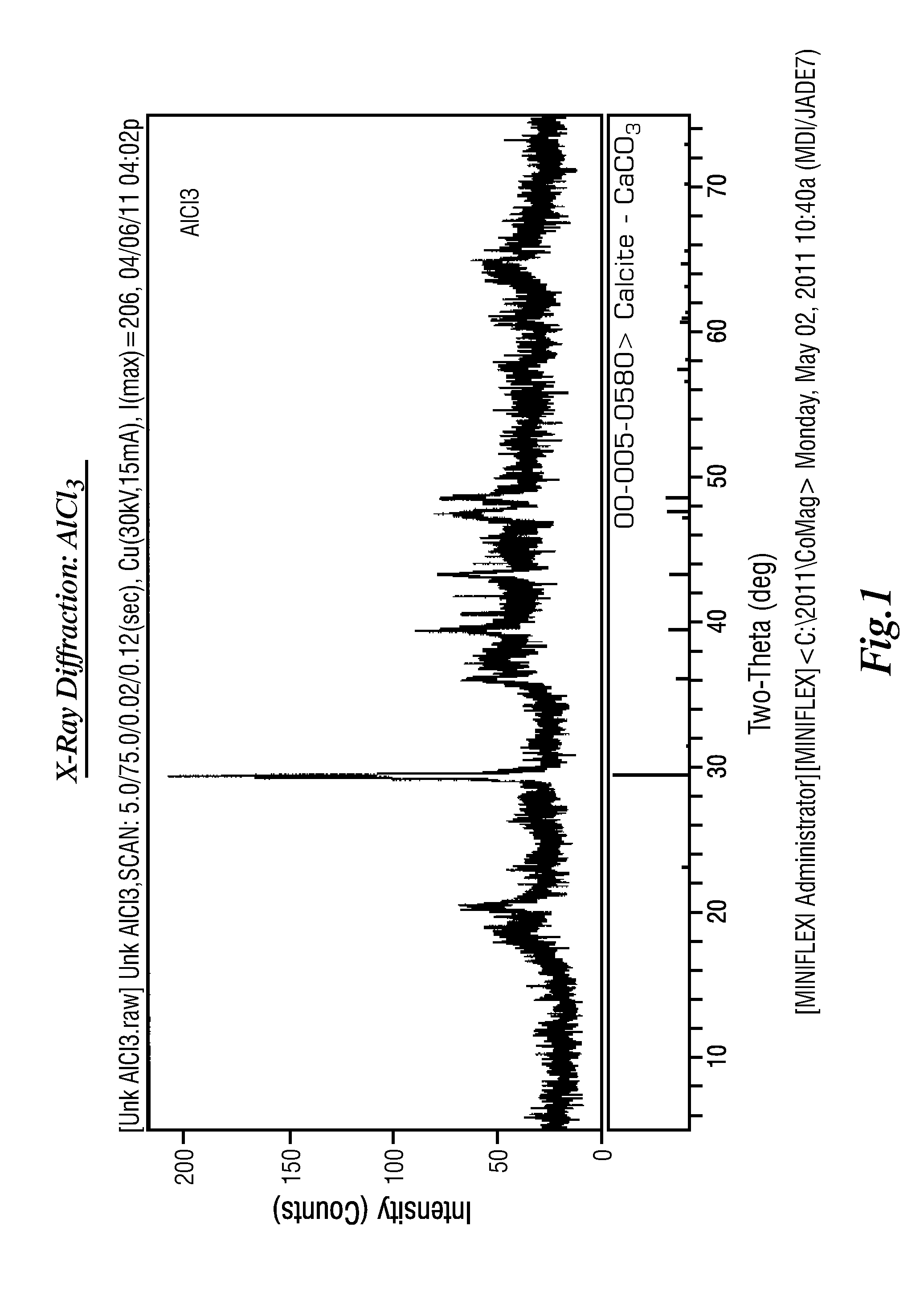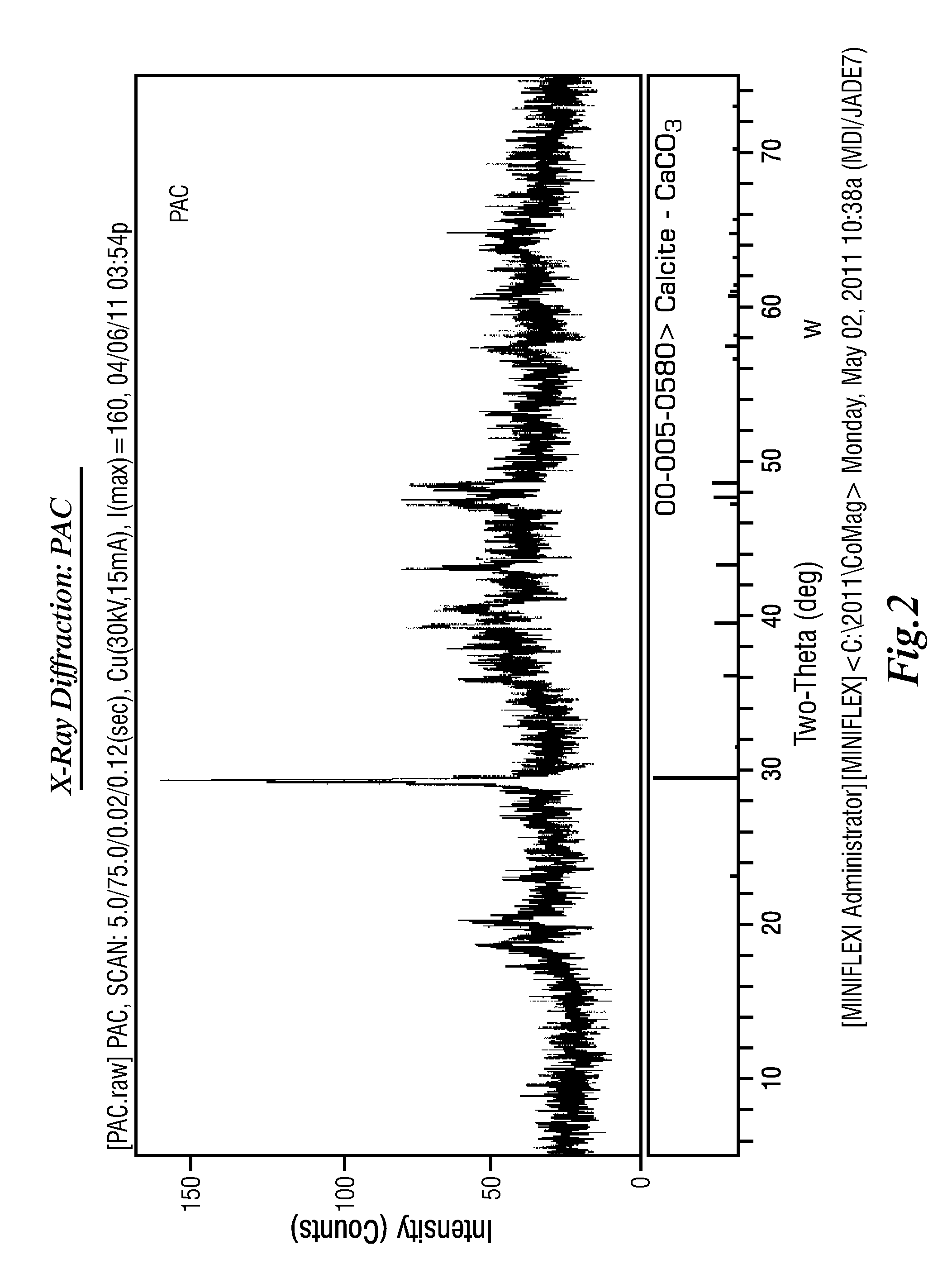Extraction of Sulfate from Water
a technology of sulfate and water, which is applied in the direction of water/sewage treatment by oxidation, separation processes, radioactive contaminants, etc., can solve the problems of significant downhole damage, vexing efforts to remove oil or gas, and inability to remove sulfate, etc., to achieve the effect of reducing alkaline earth metal content, less soluble in water, and reducing sulfate conten
- Summary
- Abstract
- Description
- Claims
- Application Information
AI Technical Summary
Benefits of technology
Problems solved by technology
Method used
Image
Examples
example 1
[0031]To demonstrate our invention, three putative reagent compositions, designated PAC / Ca, AC / Ca, and Ba / Ca / AC, were made for treating a stock solution of 2000 ppm of sodium sulfate. The percentages stated below are by weight.
[0032]Composition PAC / Ca was
PAC (15.6% Al)28.2%4.39% as AluminumCalcium Hydroxide24.3%13.16% as Calcium(54.16% Ca)Water47.5%Slurry solids 51%By loss in weightmeasurement
[0033]Composition AC / Ca was
Aluminum Chloride 70%4% as Aluminum(5.7% Al)(32 Be AC Solution)Calcium Hydroxide22.13% 11.97% as Calcium(54.16% Ca)Water7.87%Solids45.9%By loss in weightmeasurement
[0034]Composition Ba / Ca / AC was
Barium hydroxide 5%octahydrateAluminum Chloride 70%4% as Aluminum(5.7% Al)(32 Be AC Solution)Calcium Hydroxide22.13% 11.97% as Calcium(54.16% Ca)Water2.87%Solids45.1%By loss in weightmeasurement
[0035]The three experimental reagent compositions were added to a stock solution of 2000 parts per million sodium sulfate to test their effectiveness at removing sulfate. Results are sh...
PUM
| Property | Measurement | Unit |
|---|---|---|
| mole ratio | aaaaa | aaaaa |
| pH | aaaaa | aaaaa |
| concentration | aaaaa | aaaaa |
Abstract
Description
Claims
Application Information
 Login to View More
Login to View More - R&D
- Intellectual Property
- Life Sciences
- Materials
- Tech Scout
- Unparalleled Data Quality
- Higher Quality Content
- 60% Fewer Hallucinations
Browse by: Latest US Patents, China's latest patents, Technical Efficacy Thesaurus, Application Domain, Technology Topic, Popular Technical Reports.
© 2025 PatSnap. All rights reserved.Legal|Privacy policy|Modern Slavery Act Transparency Statement|Sitemap|About US| Contact US: help@patsnap.com


